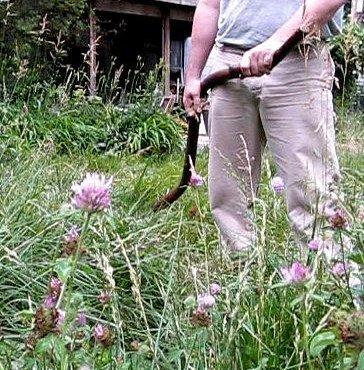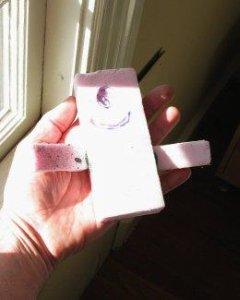_________________________________________________________________________________________________________
new "how to" posts

#3 tool care
#4 the potato cannon

#5 "no evil" applesauce recipe
#6 rebuilding the "Funky Dory"
_________________________________________________________________________________________________________
#1 Backyard casting
The kids wanted to make metal robots, so we checked out several sites run by enthusiasts of backyard casting. We built a flower pot crucible, using a modified version of the "flowerpot crucible" shown here (we did not purchase the plans).
First attempt. Results of the first smelting are shown in the slideshow to the right. You can, indeed, melt scrap alminum with a charcoal-fired, shop-vac aspirated, flower pot crucible, and messing with molten metal is, indeedy, quite dangerous.
Second attempt. We were better prepared in our second attempt with better safety equipment and a thicker walled steel crucible. We also used hardwood, rather than pressed briquete charcoal (Cowbody brand, available at Home Depot), which seems to burn hotter, as shown in second slide show below to the right.
Casting the robots. We choose the "lost-styrofoam" method, used by Paolo
Soleri at Arcosanti. The kids each made robots, using "pink" Corning insultation. The models were packed in green sand, which can be made from playsand and kitty litter, and poured. Model and cast robot (not the same) are shown below.
Carbon emissions. Our plan is to fabricate some of the metalwork for the JP Green House using recycled aluminum and brass scrap. We are not able to calculate carbon emissions from our flower pot furnace, but it seems a reasonable bet that it is lower than the lifecycle costs of fabricating new material in China and shipping it to Boston. We will home-cast only as an alternative to purchasing new products.


_________________________________________________________________________________________________________
#2 Using the scythe.
A web search at the time, 2 years ago, turned up no videos or tips on how use a scythe, so I just kept bashing away at it, assuming that it was a matter of getting the hang of the thing (and getting desk-bound muscles back into shape).
By accident one day, the trick of the thing revealed itself and, as others might have the same problem, I thought I'd try and describe the - or at least, an approach, which seems to work.
The key is not to twist, but swing the blade at a near 90 degrees in long straight swipes. The blade itself is angled up from the ground and the curved blade provides the sideways slicing force. After each swing, shuffle forward a step and swing straight again. A pendulum motion develops, similar to good hammer work, and a sharp scythe will cut through remarkably dense growth without much muscle work.
It seems straightforward, but for anyone with certain forms of martial arts training - where we learn in long practice that power comes from twisting the hips - it may be counter-intuitive.